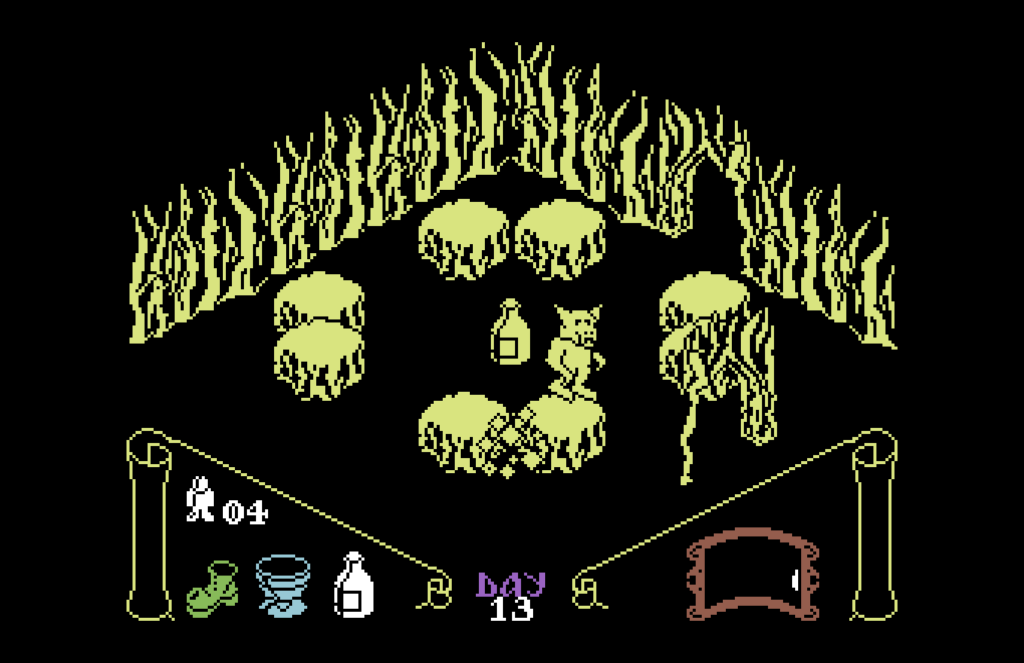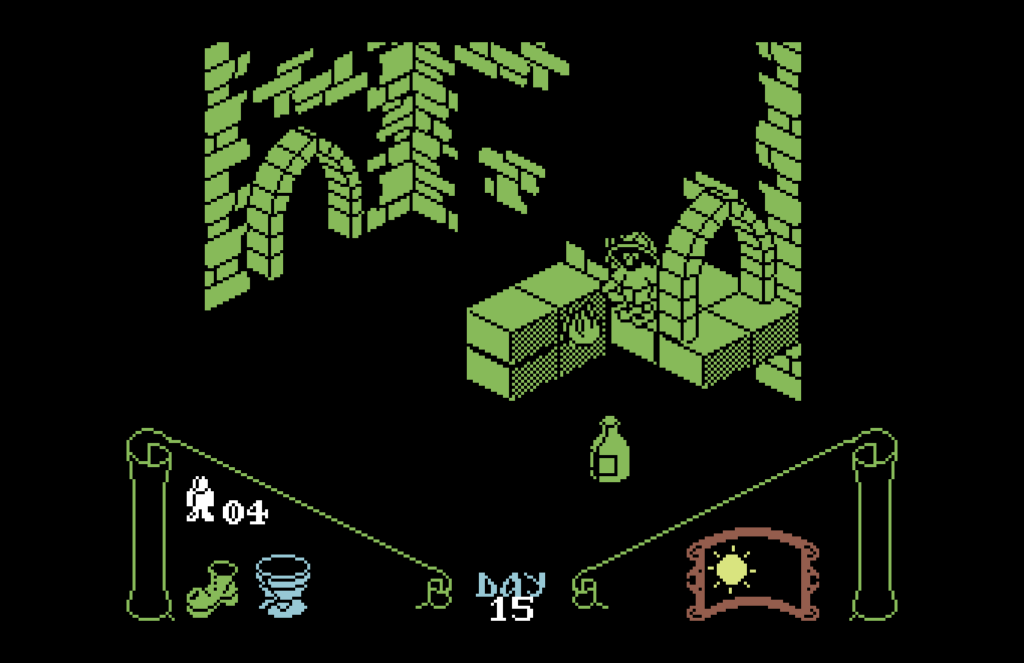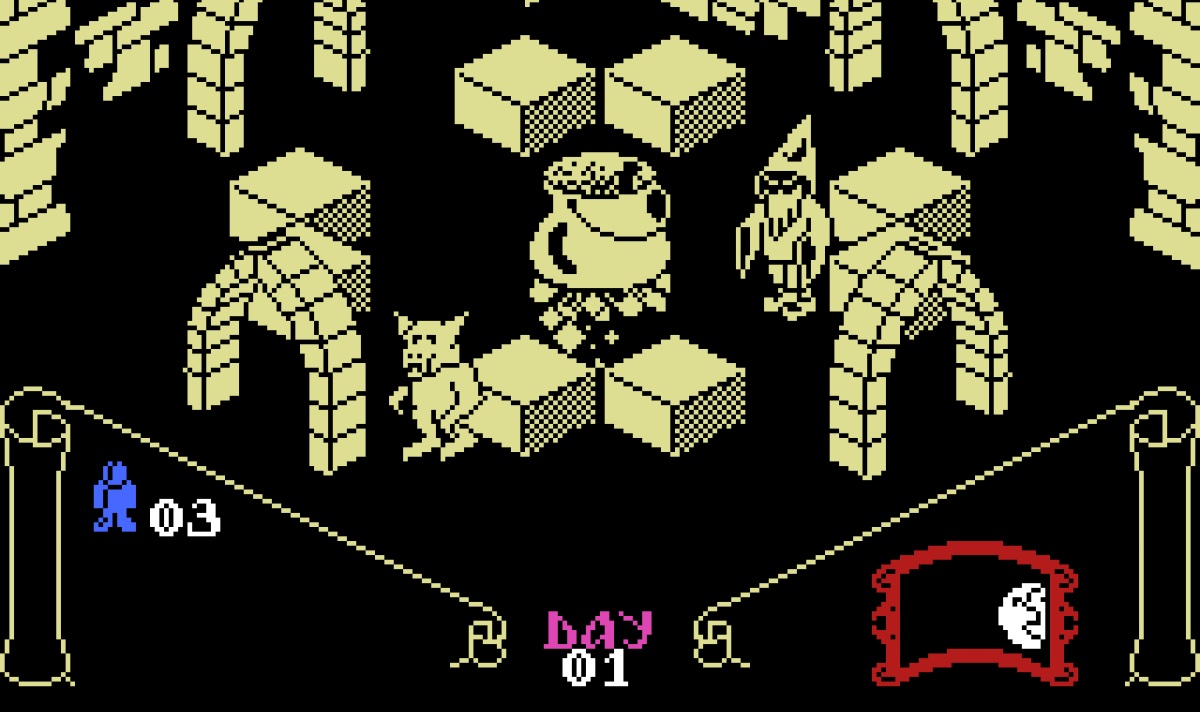In the annals of video game history, certain titles shine brightly as pioneers and innovators, forever etching their mark on the landscape of interactive entertainment. Among these luminous gems, there exists a game that not only defied convention but redefined the possibilities of game design and presentation. “Knight Lore,” a classic title developed by Ultimate Play the Game (now Rare), took the gaming world by storm when it was released in the mid-1980s. This article delves into the fascinating world of “Knight Lore,” exploring its genre, platforms, gameplay, key features, strategies, reviews, cultural impact, sequels, and examples of similar games.
The Advent of Knight Lore
Genre and Platforms
“Knight Lore” is an iconic isometric action-adventure game that first emerged in 1984. This groundbreaking title pushed the boundaries of what was thought possible in the realm of 8-bit gaming. It’s a fusion of action, puzzle-solving, and exploration that defies easy categorization. “Knight Lore” was initially released for the ZX Spectrum, a popular home computer system of the time. However, its immense success led to ports for various other platforms, including the Amstrad CPC, BBC Micro, and MSX.
The Quest Begins: Gameplay in Knight Lore
The Isometric Perspective
One of the defining features of “Knight Lore” is its use of isometric graphics. Unlike most games of its era, which utilized traditional 2D side-scrolling or top-down perspectives, “Knight Lore” presented players with a 3D isometric view. This shift in perspective was revolutionary, giving players a sense of depth and immersion previously unseen in video games.
Character Transformation
In “Knight Lore,” players assume the role of Sabreman, a brave knight who finds himself trapped in a cursed castle. However, Sabreman isn’t your typical hero. By day, he’s a human, but by night, he’s transformed into a werewolf. This transformation is not merely cosmetic; it is central to the game’s mechanics.

Real-Time Clock
A notable feature of “Knight Lore” is its real-time clock. The game world continually changes from day to night and vice versa, affecting both the layout of the castle and Sabreman’s abilities. During the day, Sabreman can access certain areas and perform specific actions, while at night, his werewolf form grants him different abilities and limitations. This dynamic day-night cycle adds a layer of complexity and strategy to the gameplay.
Key Gameplay Features
Exploration and Puzzles
“Knight Lore” is not a straightforward hack-and-slash game. It requires players to explore the vast and intricately designed castle, solving puzzles, finding keys, and uncovering hidden secrets. The isometric perspective adds depth to the exploration, as players must navigate the 3D space while managing Sabreman’s dual identities.

Time Management
Managing the day-night cycle is crucial to success. Players must plan their actions carefully, as some tasks can only be accomplished during specific times. This real-time element adds tension and challenge, forcing players to adapt to changing circumstances.
Limited Resources
To survive, Sabreman must locate and consume items like food and elixirs. These resources are finite, adding an element of resource management to the gameplay. Balancing the use of these items becomes critical, as running out can lead to failure.
Strategies and Cheats
Patience and Observation
“Knight Lore” rewards patience and keen observation. Careful examination of the castle’s rooms and understanding the timing of the day-night cycle are essential for progress. Rushing in without a plan can lead to frustrating dead ends.
Mapping
Given the complex, ever-changing castle layout, many players created their maps to aid in navigation. Drawing out the castle’s rooms and corridors helped players keep track of their progress and identify areas yet to be explored.
Exploiting Glitches
As with many retro games, players have discovered various glitches and exploits in “Knight Lore.” While not officially endorsed, these techniques can be used to bypass difficult sections or achieve high scores.
Reviews and Cultural Impact
Critical Acclaim
“Knight Lore” received widespread critical acclaim upon its release. Critics praised its innovative isometric graphics, challenging gameplay, and unique day-night mechanics. It was a game that pushed the boundaries of what was possible on the hardware of its time.
Legacy
The legacy of “Knight Lore” extends beyond its critical success. It served as an inspiration for future game developers, demonstrating the potential of isometric graphics and real-time gameplay. Its influence can be seen in later classics like “The Legend of Zelda: A Link to the Past.”

Nostalgia
Even decades after its release, “Knight Lore” remains a beloved title among retro gaming enthusiasts. Its isometric graphics and immersive gameplay continue to evoke a sense of nostalgia for those who experienced it during their youth.
Remakes and Ports
In recent years, “Knight Lore” has seen remakes and re-releases on modern platforms, introducing a new generation of gamers to its unique charm. These adaptations aim to capture the essence of the original while enhancing the visuals and controls for contemporary audiences.
Sequels and Examples of Similar Games
Sabre Wulf
Following the success of “Knight Lore,” Ultimate Play the Game released “Sabre Wulf” in 1984. This game retained the isometric perspective and character transformation elements while introducing new challenges and environments. “Sabre Wulf” further solidified the studio’s reputation for innovative gameplay.
Alien 8
Another title from Ultimate Play the Game, “Alien 8,” continued to explore the possibilities of isometric gameplay. Players controlled a robot tasked with rescuing crew members on a spaceship. Like “Knight Lore,” it featured intricate puzzles and real-time action.
Solstice
In the late 1980s, “Solstice” for the Nintendo Entertainment System (NES) drew inspiration from “Knight Lore’s” isometric perspective. Players navigated a wizard through a complex castle, solving puzzles and battling enemies. While not a direct clone, “Solstice” echoed the spirit of innovation seen in “Knight Lore.”
Landstalker
In the early 1990s, the Sega Genesis (Mega Drive) saw the release of “Landstalker,” an isometric action-adventure game that shared similarities with “Knight Lore.” Players guided a treasure hunter named Nigel through a vibrant world filled with puzzles and secrets. “Landstalker” embraced the isometric perspective and offered a rich, story-driven experience.
Lara Croft: Tomb Raider
The influence of “Knight Lore” can even be detected in the iconic “Tomb Raider” series. While “Tomb Raider” embraced 3D graphics and a different style of gameplay, its emphasis on exploration, puzzle-solving, and complex environments echoes the legacy of “Knight Lore.”
Knight Lore
“Knight Lore” stands as a testament to the innovative spirit of early video game development. Its isometric graphics, dynamic day-night cycle, and challenging gameplay continue to captivate players and inspire future generations of game creators. As we reflect on this classic title, it’s clear that “Knight Lore” will forever hold a cherished place in the annals of gaming history, a beacon of creativity and ingenuity that continues to shine brightly.
Explore more gaming classics:
- The Legend of Zelda: A Link to the Past
- Sabre Wulf on ZX Spectrum
- Solstice on NES
- Landstalker on Sega Genesis
- Tomb Raider Franchise
Note: The information in this article is accurate as of the last knowledge update in September 2021. Since then, there may have been new developments or releases related to “Knight Lore” or similar games.

